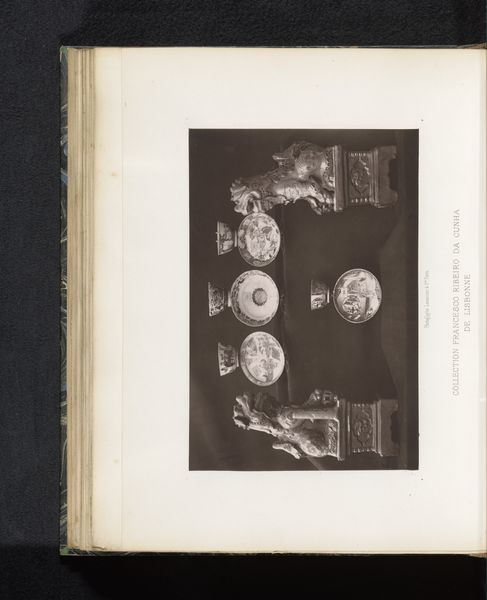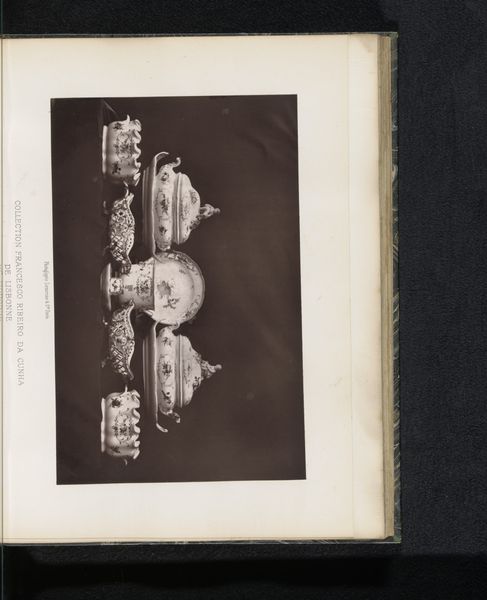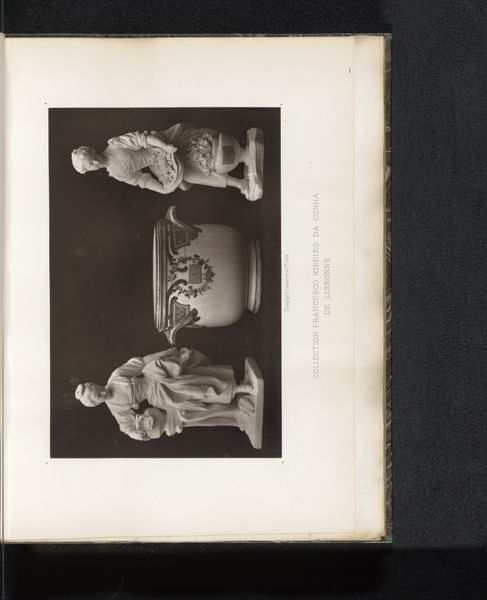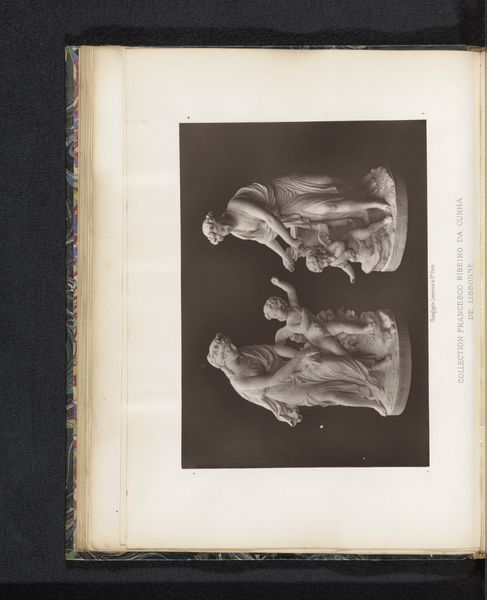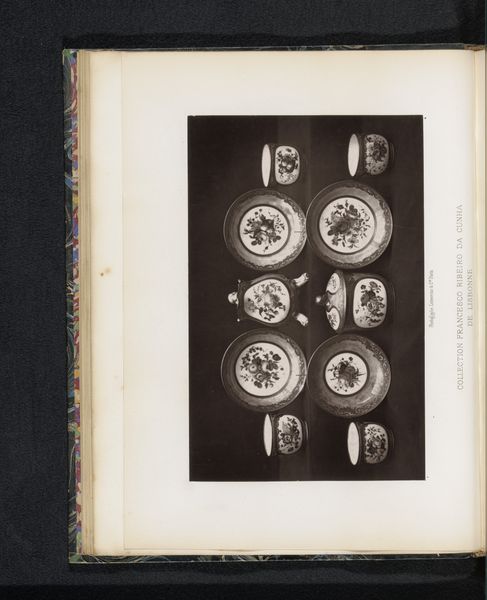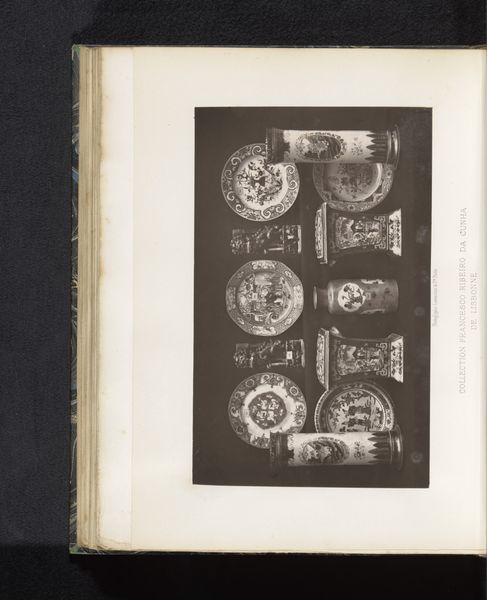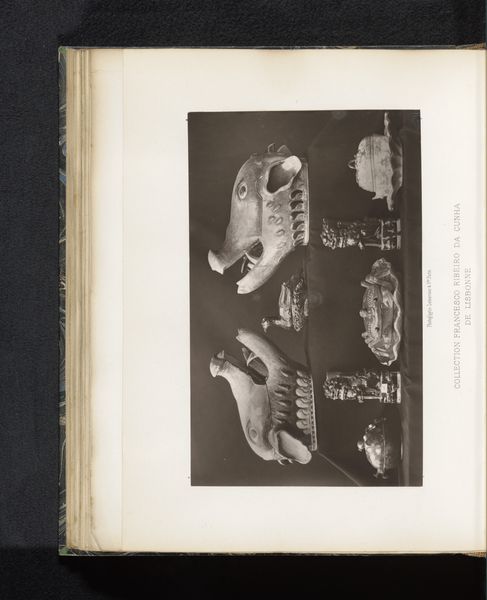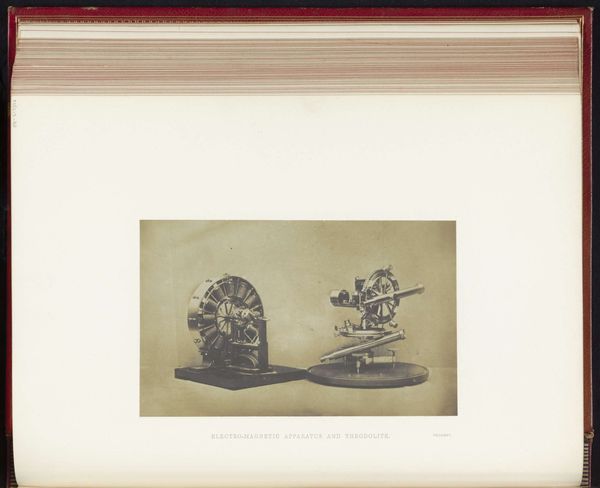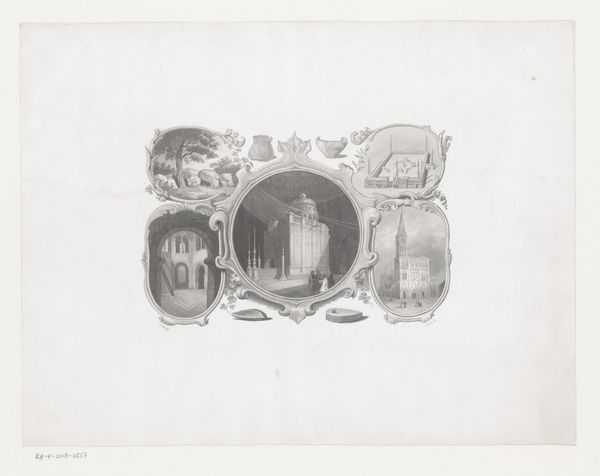
ceramic, photography, sculpture
#
stone
#
sculpture
#
ceramic
#
white palette
#
vase
#
photography
#
sculpture
Dimensions: height 129 mm, width 199 mm
Copyright: Rijks Museum: Open Domain
Curator: What a photograph! It's from before 1884, titled "Vaas met ramskoppen en twee potten" and attributed to Lemercier & Cie. The image presents a vase adorned with ram's heads, alongside two lidded pots. These ceramic objects reside at the Rijksmuseum, emblems of a bygone era frozen in time. Editor: Ooh, instantly I’m feeling a weird sense of ceremony. They’re like little thrones for… I don't know, wealthy gerbils? There's this very precise arrangement against that stark background, all about display, right? It feels important but also slightly absurd. Curator: Absolutely. Think of the context: objects of prestige photographed meticulously, their value as signifiers of wealth and status amplified. These pieces likely circulated within elite social circles, embodying specific narratives about taste and power. We can explore the ram’s head motif, and the narratives surrounding power, masculinity, and dominance that those imply. Editor: Those ram’s heads are doing a lot of heavy lifting! They’re stuck on this otherwise pretty delicate thing. So is it a bit of a power move? Decorate the vase, then bang – some testosterone on either side just to remind everyone who’s boss. It's wonderfully weird. Curator: That’s it precisely. Juxtapose the ornamentation, delicate floral patterns against the overtly masculine symbol, creating a tension between fragility and strength, luxury and dominance. It speaks volumes about gender and class structures during this period. This "white palette", as the image tag names, seems also meaningful to these social-economic class. Editor: And they're ceramic! All that perceived "power" in something so easily shattered. Makes you think about legacy and how fragile it actually is. Maybe it's about domesticating power, keeping it on your mantlepiece under a fancy lid. Curator: A fascinating point. This photograph captures a specific cultural moment where these objects were not merely decorative but potent symbols actively participating in constructing identity and reinforcing social hierarchies. The way they are grouped invites comparison. Editor: It really does. Thanks for steering my wealthy gerbil thought experiment towards some actual meaning. Now I feel less like laughing at them and more like side-eyeing them, and side-eyeing history, actually. Curator: And that’s what makes looking back so vital, isn't it? Recognizing the legacies and asking what they really represent for our world.
Comments
No comments
Be the first to comment and join the conversation on the ultimate creative platform.
